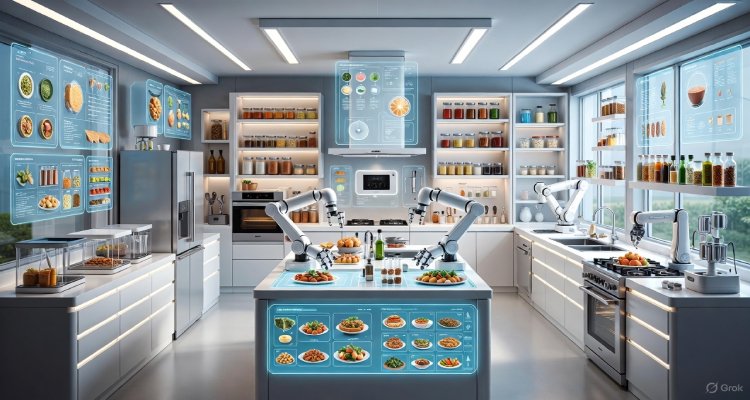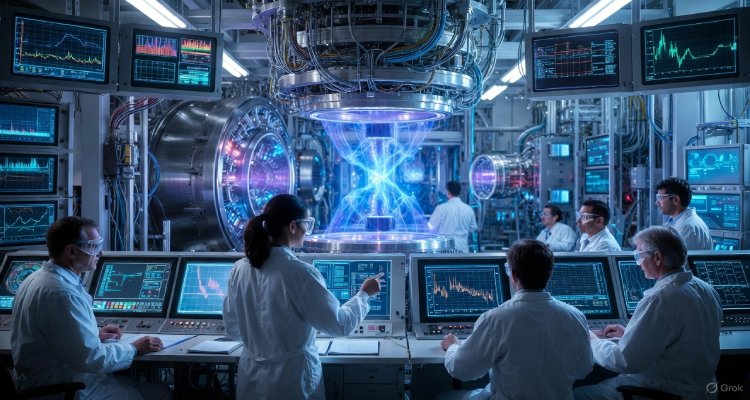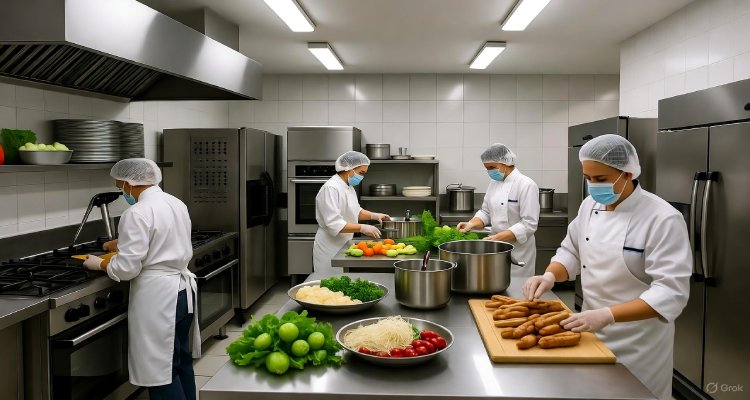The Ghost Kitchens That Feed Millions
Inside the rise of ghost kitchens—virtual restaurants reshaping the global food economy, driven by technology, delivery apps, and shifting consumer habits.
Introduction: The Hidden Kitchens Changing How We Eat
In an industrial warehouse on the outskirts of Mumbai, hundreds of meals are prepared daily—none served in a dining hall, none even plated for guests. These are ghost kitchens, the invisible backbone of a food revolution. Across the globe, millions of people order meals each day from brands that may have no public storefront, no signs, and no waiters—just a well-optimized online presence and a promise of speedy delivery.
What began as a survival strategy during the pandemic has evolved into a multi-billion-dollar business model fundamentally redrawing the lines of the restaurant world.
Context & Background: From Brick-and-Mortar to the Cloud
Ghost kitchens—sometimes called cloud kitchens, dark kitchens, or virtual restaurants—operate without public dining spaces. They rely on digital ordering through delivery platforms such as Zomato, Uber Eats, DoorDash, and Swiggy. The model lowers overhead costs, enabling entrepreneurs and established brands alike to reach customers directly through apps.
The concept gained traction in 2019 but exploded during the COVID-19 pandemic as lockdowns forced restaurants to shutter dining rooms. Suddenly, digital-first kitchens turned necessity into innovation. Global forecasts now estimate the ghost kitchen sector will exceed $130 billion by 2030, according to data from Euromonitor International. With minimal start-up costs and high scalability, these kitchens have become a haven for both first-time entrepreneurs and global chains experimenting with data-driven menus.
Main Developments: The Global Surge in Virtual Dining
In cities like Dubai, Los Angeles, London, and Bengaluru, ghost kitchens now occupy entire industrial zones. Many operate under umbrella companies that manage multiple virtual brands. A single kitchen might serve Italian pasta, a vegan bowl concept, and a fried chicken brand—all under different online identities.
Companies like CloudKitchens (founded by former Uber CEO Travis Kalanick), Rebel Foods in India, and Kitopi in the Middle East have become the new landlords of the food-tech world. They lease kitchen spaces, provide logistics and tech support, and optimize delivery routes through data analytics. The rise of artificial intelligence has also accelerated efficiency—AI predicts demand spikes, adjusts menus based on local orders, and reduces food waste.
Consumers, unaware of the intricate networks behind their orders, are driving this silent transformation. With convenience and personalization becoming paramount, the ghost kitchen model offers unprecedented agility.
Expert Insight & Public Reaction
According to Priya Menon, a hospitality consultant based in Singapore, ghost kitchens represent both “the democratization of dining and the industrialization of cuisine.” She explains that small entrepreneurs can now compete with legacy restaurant brands by leveraging delivery algorithms and customer data instead of expensive real estate.
However, not all voices are enthusiastic. Labor advocates and chefs warn of the depersonalization of food. “When kitchens become logistics hubs, food risks becoming product, not craft,” says Marco Bianchi, a chef who left the traditional restaurant industry to consult on sustainability in digital kitchens.
Public sentiment is also mixed. Consumers appreciate convenience but increasingly question transparency—where their food is coming from, how sustainable it is, and who is cooking it. Platforms like DoorDash have begun labeling virtual kitchens to improve trust, but regulation lags behind innovation.
Impact & Implications: Reshaping Economies and Ecosystems
The impact extends beyond dining tables. Ghost kitchens are altering urban real estate, reviving underused industrial spaces while diminishing demand for prime restaurant locations. Employment dynamics are also shifting. While new jobs arise in packaging, dispatch, and tech operations, the intimacy of traditional food service is eroding in favor of efficiency metrics.
From an environmental perspective, centralized cooking could reduce food waste but increase packaging waste due to heavy reliance on single-use containers. Some eco-focused brands are experimenting with biodegradable packaging and zero-emission delivery fleets to offset these challenges.
Tech analysts foresee the integration of drones and autonomous delivery systems within the next decade, possibly turning these cloud kitchens into fully automated ecosystems that operate 24/7.
Conclusion: The Invisible Future of Dining
Ghost kitchens are quietly feeding millions—and shaping how future generations will experience food. What began as a disruption to survive has matured into a defining model of the 21st-century food economy.
Whether these invisible kitchens become a sustainable solution or a sterile shadow of traditional dining depends on balance—between tech efficiency and human touch, between local authenticity and mass data. One thing is certain: the next time an order arrives seamlessly at your door, you may be tasting the future of the global food system.
Disclaimer :This article is intended for informational and educational purposes. It synthesizes publicly available data and expert opinions to provide accurate reporting at the time of publication. All brand names and company mentions are for contextual reference only.











